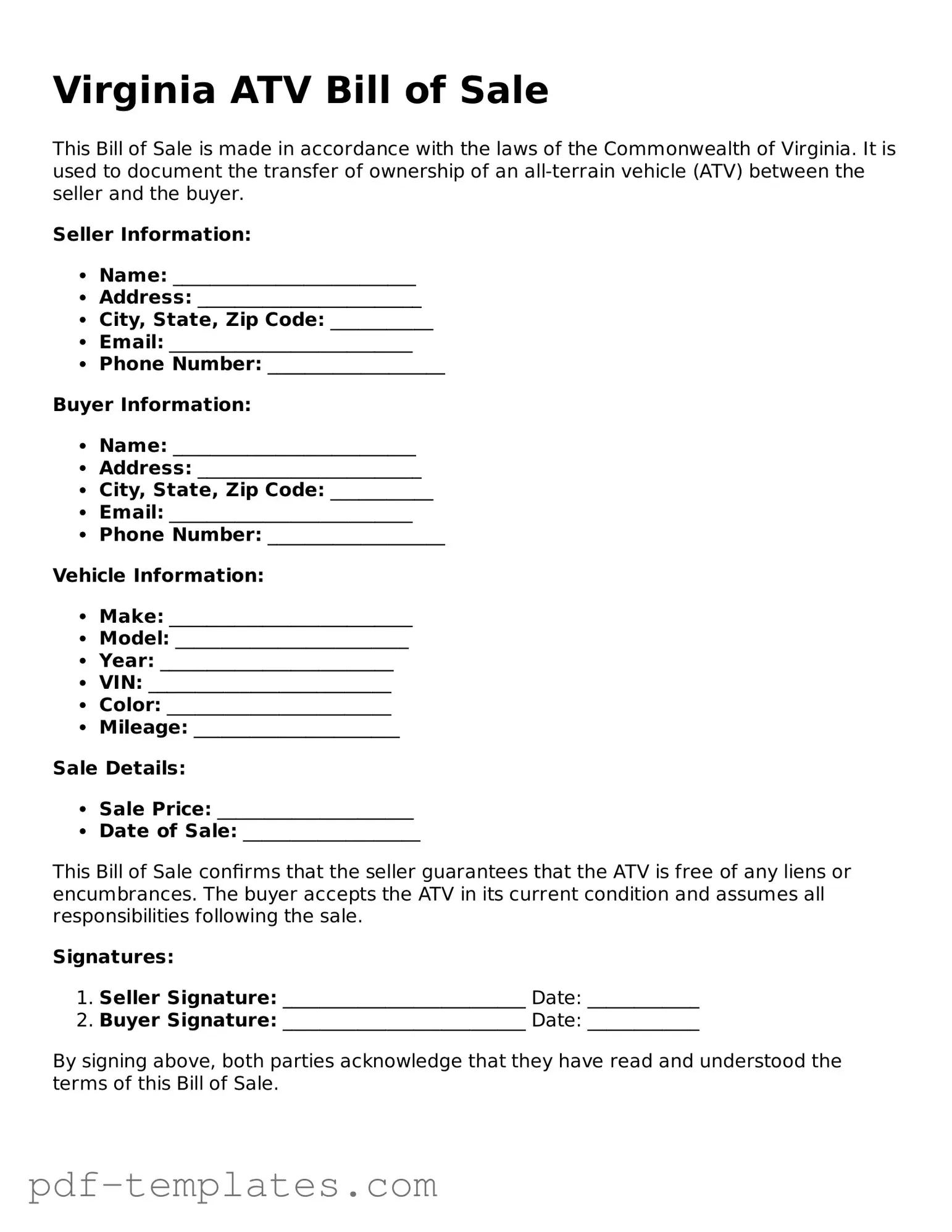Official ATV Bill of Sale Template for Virginia State
The Virginia ATV Bill of Sale form is a legal document that records the sale and transfer of an all-terrain vehicle in the state of Virginia. This form serves as proof of ownership and provides essential details about the transaction, including buyer and seller information, vehicle specifications, and sale price. To ensure a smooth transfer, it is crucial to complete this form accurately.
Ready to complete your ATV transaction? Fill out the form by clicking the button below.
Customize Form Now
